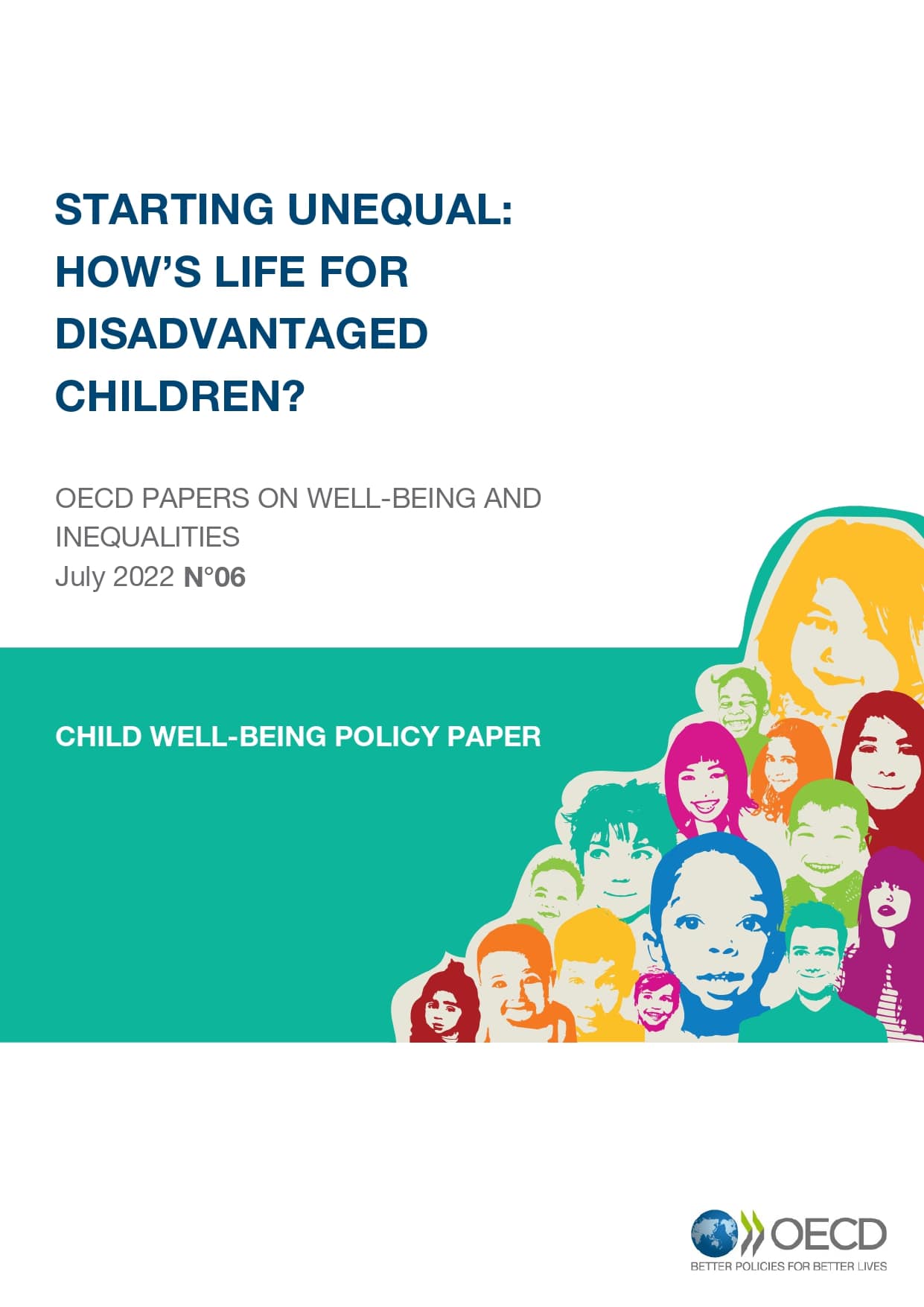Results highlight the pervasiveness of childhood disadvantage – how growing up at the bottom end of the socio-economic ladder leads to poorer outcomes in almost all areas of children’s well-being. These impacts include areas where social gradients are well documented (e.g. child health, education) but also areas less often highlighted, including how children perceive themselves and the support they receive at home, at school, and in the community. In doing so, it illustrates the scope and scale of the policy challenge for governments looking to provide all children, including those in the least privileged positions, with the best possible start in life.
Children from socially and economically disadvantaged backgrounds fare worse in almost all well-being areas
- Still too often lack access to basic material necessities, including basic food and nutrition, good-quality housing, and modern necessities like the Internet. For instance, on average, across European OECD countries, more than 10% of low-income children continue to live in very poor-quality housing.
- Are disproportionately likely to experience poor health outcomes, with children from disadvantaged backgrounds over-represented among overweight and obese children and among those reporting poorer self-rated health. On average, across OECD countries, around 25% of disadvantaged 11-, 13- and 15-year-olds are considered overweight or obese based on the World Health Organization’s definition, compared to 16% from the most advantaged households. And more than one in six disadvantaged children in the same age group rate their own health as only “fair” or “poor”, compared to one in ten advantaged children.
- Do worse in education. They are far less likely to perform well on international student assessments, such as OECD PISA, for instance: on average across OECD countries, only 6% of disadvantaged 15-year-olds reached “top performer” status on the OECD PISA tests, compared to 29% among the most advantaged. They are also far more likely to report limited ambitions for future education.
- More often report poorer social and emotional outcomes, including weaker perceived support from family, lower levels of self-belief, and lower levels of life satisfaction. On average, across OECD countries, as many as 19% of disadvantaged 15-year-olds report low satisfaction with their life as a whole, compared to 14% among the most advantaged, with gaps as large as ten percentage points in some countries.
Inequalities in well-being are rooted in the poorer environments that socially and economically disadvantaged children face at home, in school, and in the community
By definition, several aspects of home and family life are different for children from socio-economically disadvantaged backgrounds. They may be living on lower incomes, have parents working in lower-skill occupations, or have parents with lower levels of education – or some combination of all three. However, the challenges faced by children from socio-economically disadvantaged backgrounds stretch far beyond income or parental occupation or education alone. The indicators presented in the second section of the report illustrate how across OECD countries, socio-economic disadvantage is associated with poorer conditions and environments in virtually all areas of children’s lives, all of which play an important role in driving their well-being outcomes:
- At home, children from disadvantaged backgrounds are often more likely to miss out on important family activities and experience poorer quality relationships with parents. For example, on average, across OECD countries, 36% of disadvantaged 11-, 13- and 15-year-olds report finding it difficult to talk to their parents, compared to 28% among the most advantaged.
- At school, children from disadvantaged backgrounds frequently experience poorer quality learning environments, are more likely to experience bullying, and more often report a lack of connectedness to their school. On average across OECD countries, only two-thirds of 15-year-olds from disadvantaged backgrounds report feeling like they belong at school, compared to three-quarters among the most advantaged.
- With peers, children from disadvantaged backgrounds less frequently feel like they have enough friends, and less often report feeling well supported by their friends. On average, across OECD countries, only just over half (58%) of disadvantaged 11-, 13- and 15-year-olds report feeling high support from their friends, falling to as low as 30% in some countries.
- In the community, children from disadvantaged backgrounds more often grow up in poorer quality local areas, placing limits on their opportunities to socialise and participate in community life. For example, on average, across European OECD countries, 11% of low-income children live in households that report problems with crime and violence in their area, compared to 7% for high-income children.
- And online, children from disadvantaged backgrounds may be less well positioned to make the most of the digital world. Disadvantaged 15-year-olds are often significantly less likely than advantaged 15-year-olds to report using digital devices for schoolwork, or regularly reading news online. In many countries, they are also far less likely to strongly believe that the Internet is a valuable resource for accessing information. By contrast, there is little difference in children’s risk of experiencing cyberbullying or problematic social media use by socio-economic status.
